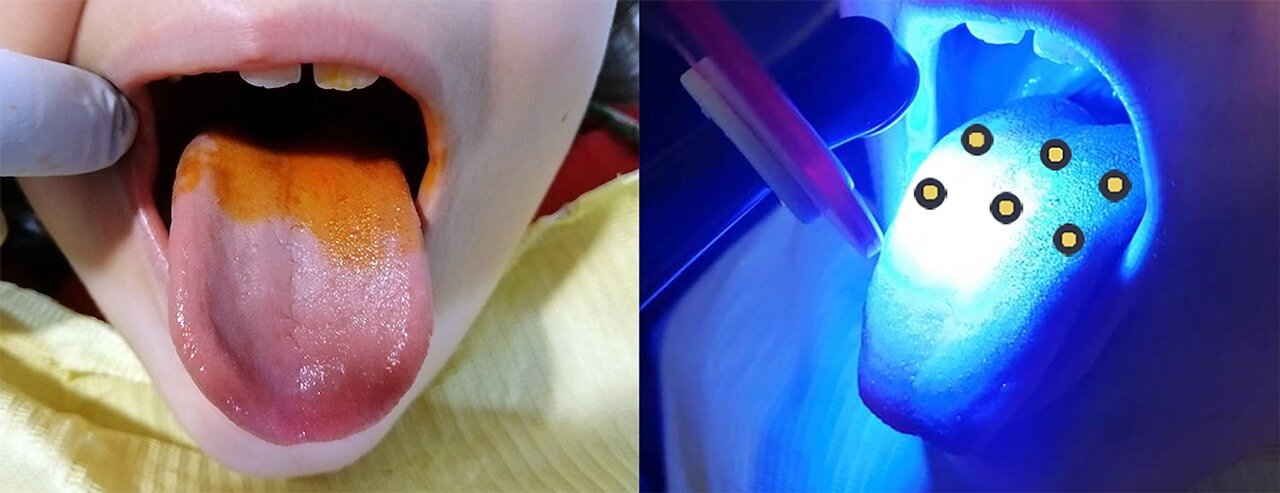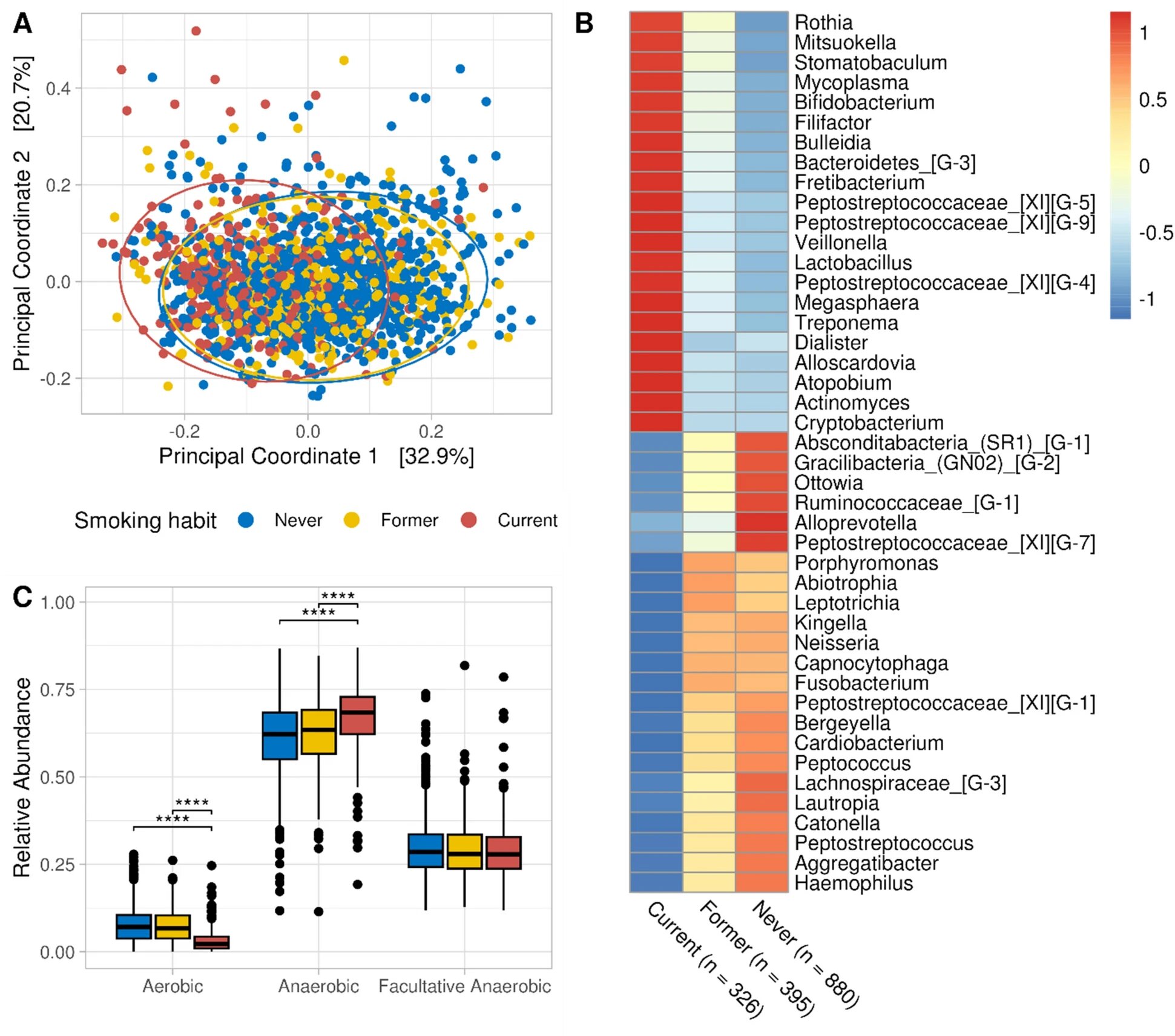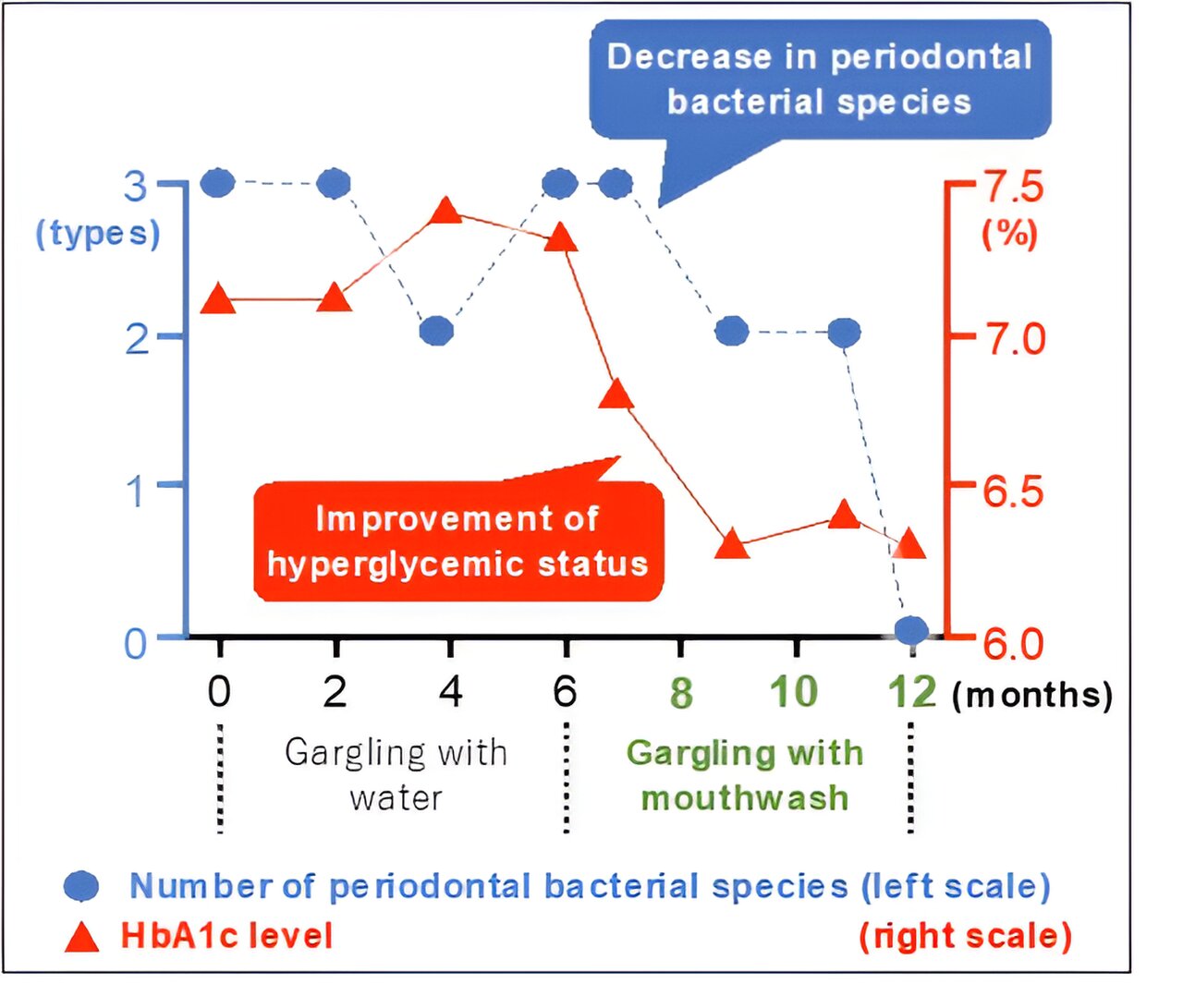
A study by researchers working in Brazil shows that antimicrobial photodynamic therapy in which blue light targets annatto colorant is a feasible and effective option for treatment of halitosis in mouth-breathing children.
Annatto is an orange-reddish pigment derived from the seeds of Bixa orellana (achiote or urucum), a shrub native to tropical parts of the Americas.
Mouth breathing dries up the saliva, reducing its antibacterial and cleansing effects, so that halitosis is likely to worsen as a result. Halitosis is the medical term for bad breath, which may reflect local or systemic conditions such as gingivitis, periodontal disease, diabetic acidosis, hepatic failure or respiratory infection.
An article on the study is published in the journal PLOS ONE.
The researchers selected 52 mouth-breathing children aged 6–12 with a diagnosis of halitosis confirmed using an inexpensive halimeter available from online retailers (enabling dentists to perform the diagnostic protocol easily in their consulting rooms).
The first author of the article is Laura Hermida Cardoso, a Ph.D. candidate under the Interinstitutional Doctorate Program (Dinter) run by Nove de Julho University (UNINOVE) in São Paulo (Brazil) and the Catholic University of Uruguay (UCU) in Montevideo. The co-authors are all researchers at the Metropolitan University of Santos (UNIMES) in São Paulo state.
Antimicrobial photodynamic therapy (aPDT) consists of the administration of a photosensitizer combined with a light source at a specific wavelength, and oxygen. The procedure generates reactive oxygen species that induce bacterial cell death. Although the study only involved children, the method can treat halitosis in people of any age.
“The photosensitizer used in the study was annatto, which is reddish and was targeted by blue light from a LED [light-emitting diode] in the photopolymerizing device most dentists now have in their consulting rooms, facilitating adoption of the protocol,” said pediatric dentist Sandra Kalil Bussadori, last author of the article and full professor in the Medical Biophotonics and Rehabilitation Sciences Graduate Studies Program at UNINOVE.
Bussadori, who is also a full professor at UNIMES and chairs the Brazilian Pediatric Dentistry Association (ABOPED), recalled that she has observed many cases of halitosis when treating children and adolescents. “These observations led me to study halitosis in depth with the aim of developing simple and effective treatment protocols,” she said.
A more affordable option
According to Bussadori, any reference to photodynamic therapy in an academic context brings to mind as first option the usual method that involves methylene blue photosensitizer and red laser light.
“But why not offer health professionals a more affordable option? It was this insight that led me to develop a photosensitizer for use with the LED photopolymerization device dentists already have. For devices fitted with a blue LED, we would need to develop a red colorant. That’s why I thought of annatto,” she said.
After several formulations, in vitro experiments and clinical trials, Bussadori succeeded in perfecting an annatto spray, which she patented in 2020. Annatto pods and seeds are dark red when ripe.
The 52 children that met the criteria for inclusion in the study were given instructions on toothbrushing with fluoridated toothpaste and dental flossing three times per day after meals for 30 days.
They were randomly divided into two groups. One was given aPDT applied to the middle third of the dorsal surface of the tongue. The other used a tongue scraper and did not receive aPDT. Both groups used toothbrushing and flossing as noted.
In the single session of aPDT performed, the annatto photosensitizer was sprayed on to the tongue at a concentration of 20% in a sufficient quantity to coat the middle third of the dorsum (five sprays) and left for two minutes to incubate. Six points were irradiated with a distance of 1 cm between points, a beam area of 2 cm per point, and exposure of 20 seconds per point. Halitosis and tongue coating results before and after treatment, and seven and 30 days later, were analyzed and compared.
Whitish or yellowish tongue coating is made up mainly of bacteria, metabolites and food debris that usually accumulate on the posterior portion of the tongue dorsum. Several studies have demonstrated that there is a correlation between tongue coating and excessive concentrations of volatile sulfur compounds produced by bacteria, leading to bad breath, but the study led by Bussadori did not find a direct correlation between tongue coating and halitosis in mouth-breathing children.
“The main cause of bad breath in these children appears to be oral dryness due to mouth breathing,” she said.
Halitosis improved significantly in both groups, but more so in the group that received aPDT.
Halitosis can result in social problems, impair quality of life and indicate more serious medical conditions. In children, it can have a negative influence on psychological development in a critical period of social interaction.
More information:
Laura Hermida Bruno et al, Assessment of photodynamic therapy with annatto and led for the treatment of halitosis in mouth-breathing children: Randomized controlled clinical trial, PLOS ONE (2024). DOI: 10.1371/journal.pone.0307957
Citation:
Photodynamic therapy with annatto colorant found to be effective against bad breath (2024, November 26)
retrieved 26 November 2024
from https://medicalxpress.com/news/2024-11-photodynamic-therapy-annatto-effective-bad.html
This document is subject to copyright. Apart from any fair dealing for the purpose of private study or research, no
part may be reproduced without the written permission. The content is provided for information purposes only.




